Eighty years ago, in December 1944, the Battle of the Bulge erupted, marking one of the most pivotal and grueling battles of World War II. Adolf Hitler, desperate to halt the Allies’ progress, launched a surprise counteroffensive known as Operation Watch on the Rhine. His goal? Split Allied forces, seize the strategic port of Antwerp, and force the Allies into a negotiated peace.
While Hitler’s vision was ambitious, German generals expressed skepticism. The plan depended heavily on speed, secrecy, and favorable weather—elements that would initially favor the Nazis but ultimately contribute to their downfall.
Surprise in the Ardennes: How the Battle Began
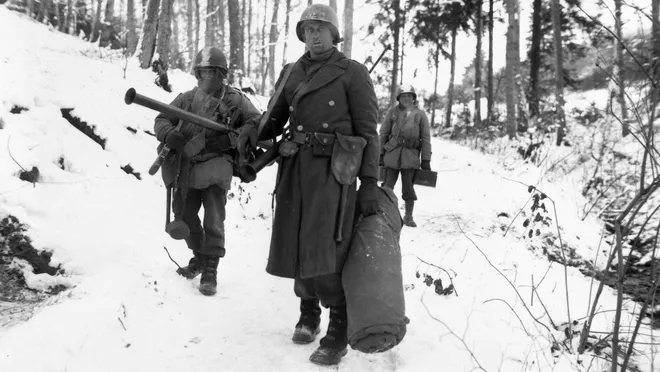
The German assault began on December 16, 1944, along an 85-mile stretch of the Ardennes Forest. This region, quiet and sparsely defended, was manned by exhausted and underprepared American troops. The surprise attack took advantage of harsh conditions, including thick cloud cover and record-breaking cold, which rendered Allied air forces ineffective.
One soldier later remarked, “It wasn’t just the Germans; we were fighting the weather too.”
The initial offensive was overwhelming. German forces broke through American lines, creating the distinctive “bulge” in the Allied front that gave the battle its name. Chaos ensued as troops scrambled to retreat, while refugees flooded the narrow roads, further complicating the American response.
Bastogne and the Heroic Resistance of the 101st Airborne
As the Germans advanced, Bastogne, a critical crossroads town, became the center of fierce resistance. The 101st Airborne Division, though surrounded, refused to surrender. When the Germans demanded their capitulation, Brigadier General Anthony McAuliffe famously replied with one defiant word: “NUTS!”
This moment encapsulated the unbreakable spirit of American soldiers. Facing freezing temperatures, dwindling supplies, and overwhelming odds, the troops held the line. Allied air drops brought vital food and ammunition, while General George S. Patton’s Third Army pushed forward to relieve the besieged forces.
The defense of Bastogne became a symbol of American grit and determination, forever immortalized in military history.
The Role of Weather and Allied Air Power
By late December, the weather began to shift—a turning point in the battle. Clear skies allowed Allied planes to resume operations, striking German troops, destroying supply lines, and crippling the offensive. The Luftwaffe, already weakened, could not compete with the resurgent Allied air superiority.
Additionally, the Germans’ reliance on captured fuel supplies proved disastrous. Their armored divisions ground to a halt as gasoline ran out, leaving their tanks stranded and vulnerable to Allied counterattacks.
The combination of American resilience, Patton’s decisive leadership, and renewed air power turned the tide of the battle. By early January 1945, the German offensive collapsed, and Allied forces pushed the enemy back toward their own borders.
The Human Cost: A Battle of Unimaginable Sacrifice
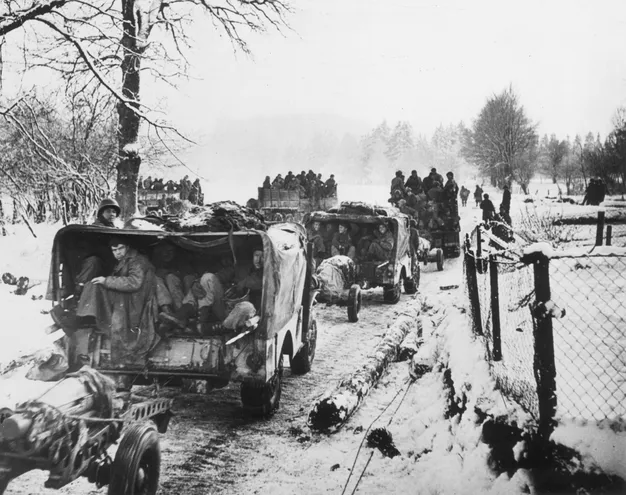
The Battle of the Bulge was the deadliest and most costly battle fought by American forces during World War II. The toll on both sides was staggering:
- Over 80,000 American casualties, including 20,000 killed.
- German casualties estimated between 80,000 and 100,000, severely weakening their already dwindling military strength.
For the soldiers on the ground, the experience was harrowing. Men fought in freezing temperatures, often without proper winter gear. Starvation, frostbite, and exhaustion became just as dangerous as enemy fire. The bravery of these men—many of them young and inexperienced—defined their place in history.
One soldier’s diary entry captured the struggle: “We marched through snow up to our waists. We didn’t sleep for days, and we fought every step of the way.”
The Turning Point: How the Battle Changed the War
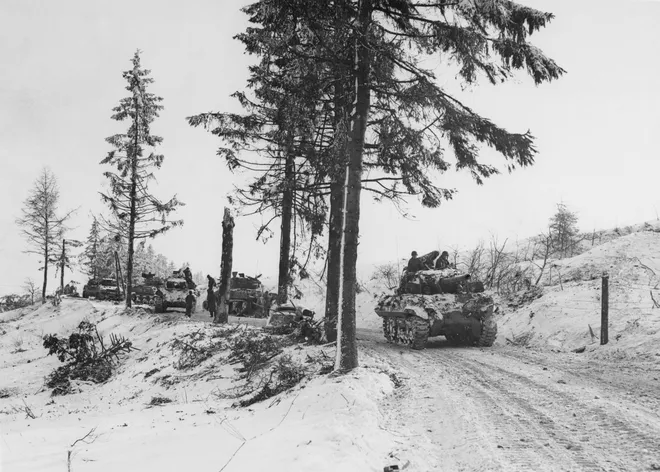
The failure of Hitler’s last major offensive marked a decisive turning point in World War II. The Nazis had expended their remaining reserves of men, fuel, and equipment, leaving them too weak to defend Germany’s borders.
For the Allies, the victory reinforced their momentum and confidence. The eastern and western fronts began to close in on Berlin, accelerating the war’s conclusion in Europe.
Winston Churchill described it best when he called the Battle of the Bulge “the greatest American battle of the war.” It showcased the resilience, sacrifice, and heroism of American troops, proving their ability to endure the harshest conditions and overcome insurmountable odds.
A Lasting Legacy: Remembering the Heroes of Bastogne
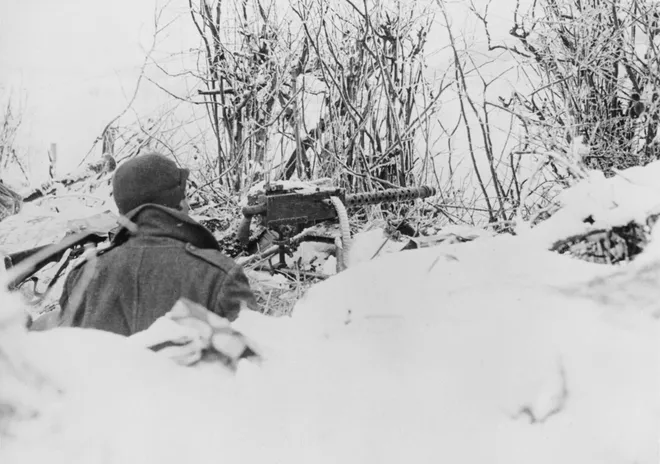
Eighty years later, the Battle of the Bulge remains a testament to courage and perseverance. The iconic photographs from the battlefield—soldiers trudging through snow, tanks rolling across frozen landscapes, and weary troops huddling for warmth—serve as haunting reminders of their sacrifice.
The defense of Bastogne, the grit of the 101st Airborne, and the relentless Allied counteroffensive are etched into history. These stories continue to inspire generations, reminding us of the extraordinary courage displayed during one of World War II’s darkest hours.
Conclusion: Honoring the Greatest American Battle
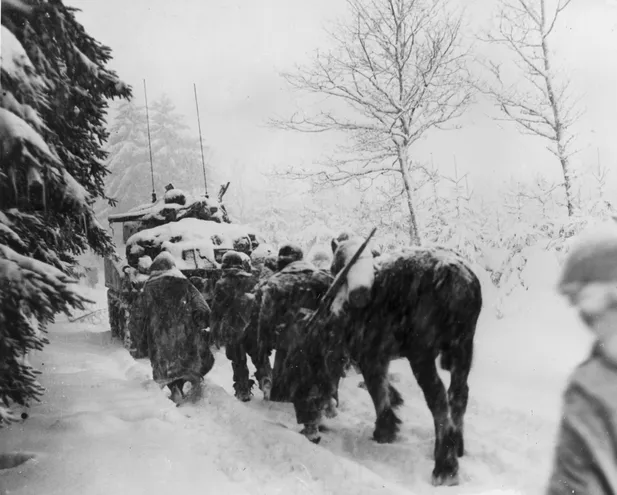
The Battle of the Bulge stands as one of the most defining moments in American military history. It was a battle of survival, fought against overwhelming odds, freezing temperatures, and an enemy determined to change the war’s outcome.
While the human cost was staggering, the victory shaped the final months of World War II, leading to the defeat of Nazi Germany.
As we reflect on this historic battle, we honor the bravery, sacrifice, and resilience of the soldiers who endured unimaginable hardship to secure freedom for future generations. Their legacy reminds us of the power of perseverance, even when victory seems out of reach.


